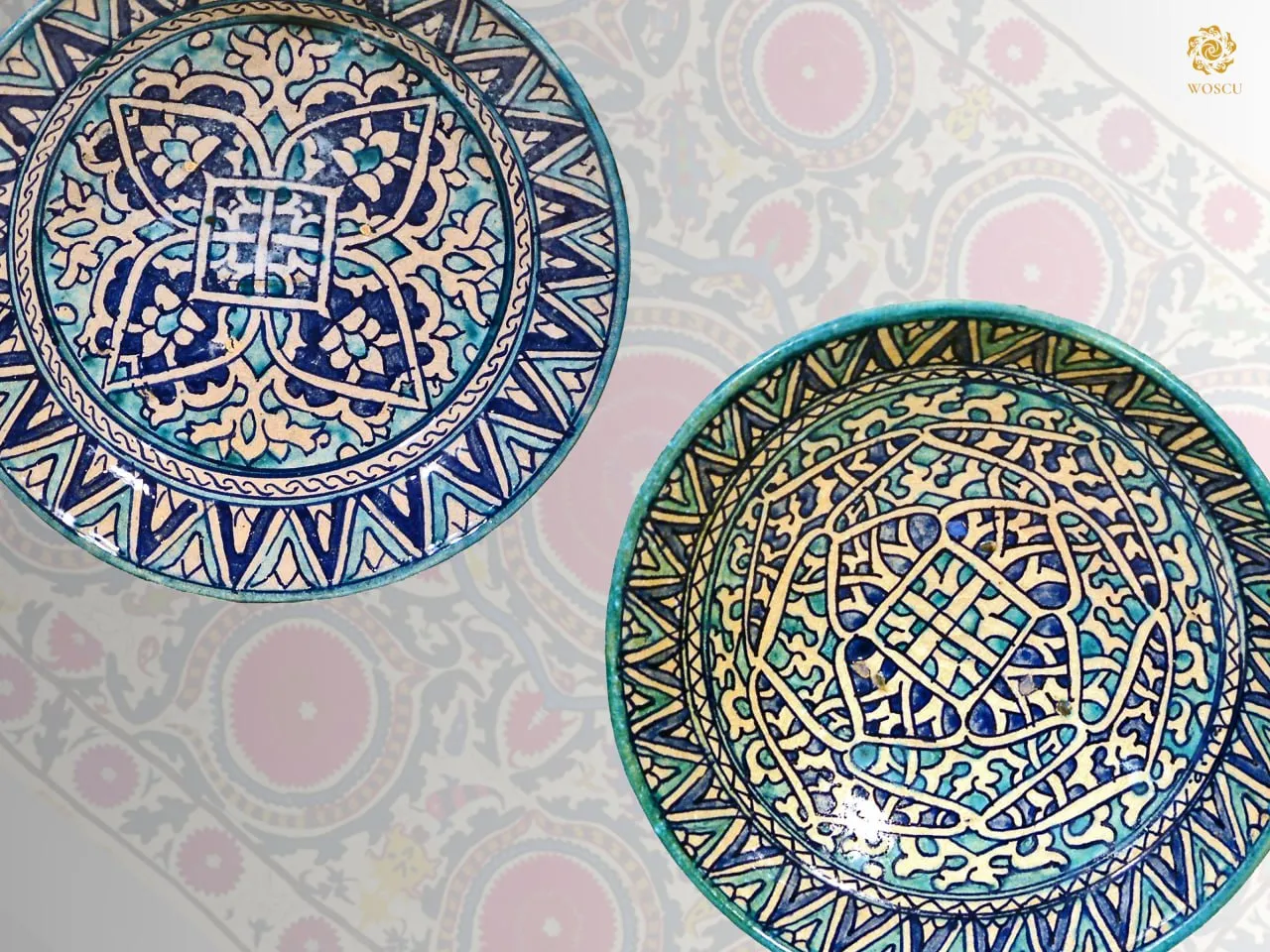Contemporary Uzbek showpiece ceramics as well as ceramics for everyday use are heirs to the great tradition of architectural ceramics which attained its peak in the 14th – 15th centuries under Tamerlane and Temurid rule. The original favorite color combination in many parts of Uzbekistan was white and blue. Non-figural, geometric and floral patterns are mainly used as decoration. Arabesques of entwined lines serve as allusions to the infinity of God’s creation.
The Saxonian State Collections of Ethnography (SES) were formed in 2004 from the three ethnological museums in Saxony – Leipzig, Dresden and Herrnhut. All three museums have their own collection traditions corresponding to their different histories. The focus in Leipzig is more on ceramics, and in Dresden on textile products, while the small collection in Herrnhut includes only a few objects from Uzbekistan. The majority of the pieces were originally purchased from the private collection of the Leipzig graphic artist and painter Gerd Thielemann.
When Gerd Thielemann revisited Uzbekistan in 2002, he compared the current situation with observations he had made earlier: “Since Uzbekistan’s independence in 1991, the market economy has had a major impact on traditional crafts. New life has been injected into all the country’s tourist centers, in mosques, museums, and ancient domed trading centers. The new generation of potters has preserved the traditional methods and decorative designs while adding their own elements to the creative process. They are forming craft associations for marketing and participate in national and international exhibitions. Folk art traditions are being kept alive and flourishing to new heights”.
Nowadays there are three schools of ceramics – Ferghana (Rishton, Andijan and Gurumsaray), Bukhara and Samarkand (Samarkand, Urgut, Shahrisabz, Denov, Gijduvon and Uba) and Khorezm (the settlements Madyr, Hanka and Kattabog). Patterns are applied in the various centers of the Bukhara and Samarkand school using their own specific procedures. While artisans in Gijduvon and Shahrisabz prefer to paint the finished products with paint brushes, those in Urgut and Denov often use engraving tools.
You can learn more about the topic in the book-album "Collections of the Federal Republic of Germany" (volume XI) in the series "Cultural Legacy of Uzbekistan in the World Collections".
The main sponsor of the project is the oilfield services company Eriell-Group.

